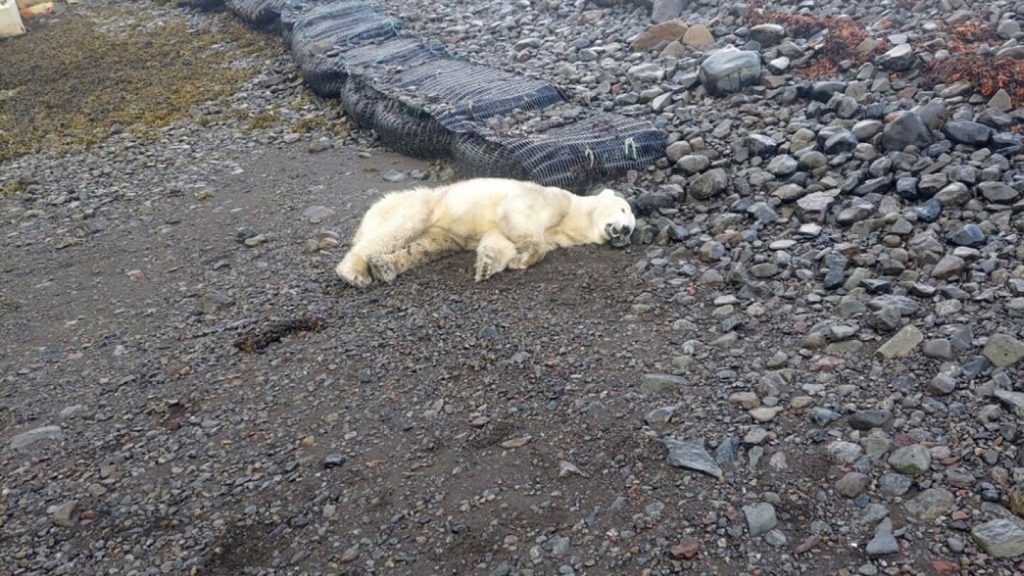A rare polar bear that was spotted outside a cottage in a remote village in Iceland was shot by police after being considered a threat. The bear was killed after police consulted the Environment Agency, which declined to have the animal relocated. The decision to shoot the bear came after it was found rummaging through garbage near a summer house where an older woman was hiding upstairs in fear. The woman contacted her daughter in Reykjavik for help, and authorities decided to take action due to the danger posed.
Polar bears are not native to Iceland but occasionally come ashore after traveling on ice floes from Greenland. According to Anna Sveinsdóttir, director of scientific collections at the Icelandic Institute of Natural History, many icebergs have been spotted off the north coast in recent weeks. While attacks by polar bears on humans are extremely rare, the loss of sea ice from global warming has led to more hungry bears coming ashore, increasing the chance of conflicts with humans.
Of the 73 documented attacks by polar bears from 1870 to 2014 in Canada, Greenland, Norway, Russia, and the United States, 15 occurred in the final five years of that period. These attacks resulted in the deaths of 20 people and injuries to 63. The bear shot in Iceland on Thursday was the first one seen in the country since 2016. Despite being a protected species in Iceland, bears can be killed if they pose a threat to humans or livestock, as was the case in this incident with the polar bear near the summer house.
After two bears arrived in Iceland in 2008, a debate over killing the threatened species led to the appointment of a task force by the environment minister. The task force concluded that killing vagrant bears was the most appropriate response, given that they pose a threat to people and animals, and the cost of returning them to Greenland was deemed exorbitant. Scientists are now studying the young bear’s physical condition, taking samples for evaluation of parasites, infections, organ health, and body fat percentage. The pelt and skull may be preserved for the institute’s collection, and a Coast Guard helicopter surveyed the area for any other bears but found none.
The incident has sparked discussions about the presence of polar bears in Iceland, as sightings are rare with only 600 recorded since the ninth century. While the bear population is healthy in east Greenland, where the bear likely came from, the sighting in Iceland has raised concerns about the effects of global warming on their migration patterns. Moving forward, authorities will continue to monitor the situation and take necessary actions to ensure the safety of residents and animals in the area. Despite the unfortunate outcome for the polar bear, the incident has shed light on the challenges posed by climate change and the need for conservation efforts to protect vulnerable species.


